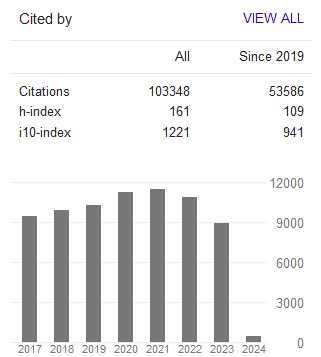The Moderating Role of Leader-Member Exchange on the Relationship between Emotional Labor with Job Satisfaction or Turnover Intention
- Hakan Turgut
- Ismail Tokmak
- M. Fikret Ates
Abstract
It is known in the business world that employees’ display of emotional labor in their relations with customers contributes to the success of the organization. Therefore, the aim of this study is to find out how the emotional dilemmas that employees experience affect their perceptions on job satisfaction and turnover intention and whether leader-member exchange has a moderating role on these relationships. In this respect, we performed a survey on the 371 employees of a company in Turkey. We used the scale developed by Diefendorff et al. (2005) to test emotional labor; the scale developed by Scandura and Graen (1984) to test leader-member exchange; the scale developed by Chen et al. (2009) to test job satisfaction and the scale developed by Scott et al. (1999) to test turnover intention. The all scales were measured valid and reliable for this sample group. In the hierarchical regression analyses, done to test the hypotheses, all variables were included in the model. According to the findings, emotional labor has a significant and positive direct effect on turnover intention and it has a significant and negative direct effect on job satisfaction. All these results taken into consideration, it was confirmed that when emotional labor increases, turnover intention also increases, and job satisfaction decreases. Furthermore, the moderating role of leader-member exchange between the relationship of emotional labor and turnover intention wasn’t approved; however, its moderating role between the relationship of emotional labor and job satisfaction was approved. To sum up, it is estimated that performing emotional labor is inevitable for organizational success and it is essential to develop new methods in order to prevent the negativities resulting from emotional dilemmas.
- Full Text:
 PDF
PDF
- DOI:10.5539/ijbm.v11n12p83
Journal Metrics
Google-based Impact Factor (2023): 0.86
h-index(2023): 152
i10-index(2023): 1168

Index
- Academic Journals Database
- AIDEA list (Italian Academy of Business Administration)
- ANVUR (Italian National Agency for the Evaluation of Universities and Research Institutes)
- Berkeley Library
- CNKI Scholar
- COPAC
- EBSCOhost
- Electronic Journals Library
- Elektronische Zeitschriftenbibliothek (EZB)
- EuroPub Database
- Excellence in Research for Australia (ERA)
- Genamics JournalSeek
- GETIT@YALE (Yale University Library)
- IBZ Online
- JournalTOCs
- Library and Archives Canada
- LOCKSS
- MIAR
- National Library of Australia
- Norwegian Centre for Research Data (NSD)
- PKP Open Archives Harvester
- Publons
- Qualis/CAPES
- RePEc
- ROAD
- Scilit
- SHERPA/RoMEO
- Standard Periodical Directory
- Universe Digital Library
- UoS Library
- WorldCat
- ZBW-German National Library of Economics
Contact
- Stephen LeeEditorial Assistant
- ijbm@ccsenet.org
